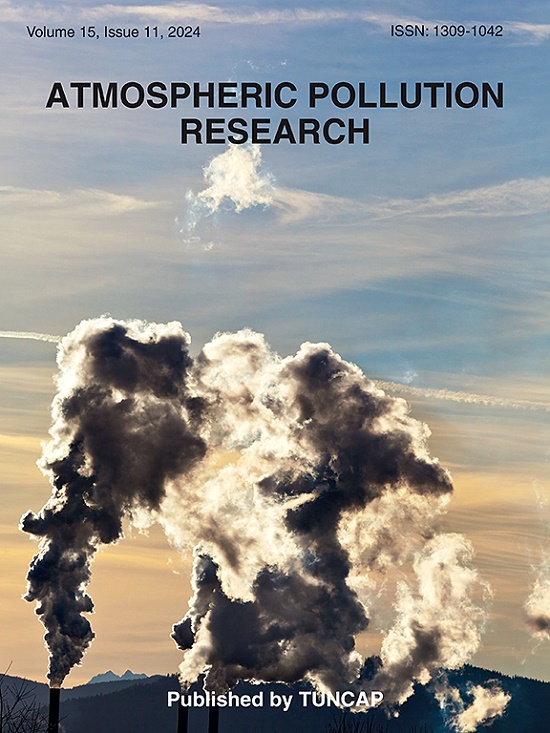Ammonia emissions from fertilizer application as a dominant controller of nitrogenous aerosols in the urban atmosphere of Kunming, Southwest China
IF 3.9
3区 环境科学与生态学
Q2 ENVIRONMENTAL SCIENCES
引用次数: 0
Abstract
The complex nature of the sources and formation processes of nitrogenous aerosols are a significant problem in cities. Despite being recognized as a less polluted city, Kunming has encountered unexpected air pollution events in the past few years. In this study, PM2.5 samples collected from Kunming were analyzed to ascertain the source apportionment of nitrogenous aerosols. It was observed the δ15N values of the total nitrogen (TN) in PM2.5 over the sampling period varied from 2.4‰ to 18.4‰ (12.0 ± 2.6‰). An isotope-based source apportionment method was employed to quantify the proportional contribution from six potential sources: NH3 from fertilizer application (63.1%), livestock excreta (9.5%), the mixing source (5.5%); NOX from vehicle emissions (8.5%), biomass burning (7.1%), and coal combustion (6.4%). Notably, the content of the nitrogen species demonstrated a consistent increase from late October. The total nitrogen levels and nitrogen oxidation ratios (NOR) were found to be sensitive to the changes in temperature and aerosol liquid water content (ALWC). It can be inferred that the higher ALWC levels enhanced the hydrolysis of N2O5, thereby promoting the conversion of NO2, boosting the growth of nitrogenous aerosols, and leading to elevated NOR values. The PSCF analysis indicated that nitrogenous aerosols in urban Kunming were mainly affected by local and regional “hot spots” of NH3 emissions from fertilizer application. This research not only presents a robust method for quantifying the primary sources of TN in PM2.5, but also offers insights into air quality assessment and the management of atmospheric nitrogen pollution in Kunming.

求助全文
约1分钟内获得全文
求助全文
来源期刊

Atmospheric Pollution Research
ENVIRONMENTAL SCIENCES-
CiteScore
8.30
自引率
6.70%
发文量
256
审稿时长
36 days
期刊介绍:
Atmospheric Pollution Research (APR) is an international journal designed for the publication of articles on air pollution. Papers should present novel experimental results, theory and modeling of air pollution on local, regional, or global scales. Areas covered are research on inorganic, organic, and persistent organic air pollutants, air quality monitoring, air quality management, atmospheric dispersion and transport, air-surface (soil, water, and vegetation) exchange of pollutants, dry and wet deposition, indoor air quality, exposure assessment, health effects, satellite measurements, natural emissions, atmospheric chemistry, greenhouse gases, and effects on climate change.
 求助内容:
求助内容: 应助结果提醒方式:
应助结果提醒方式:


